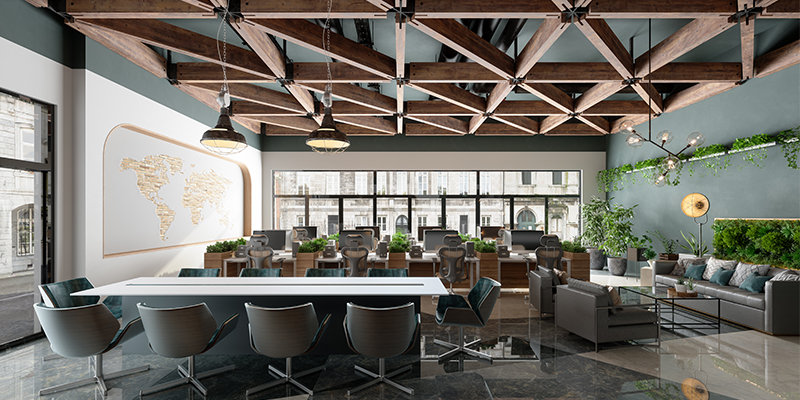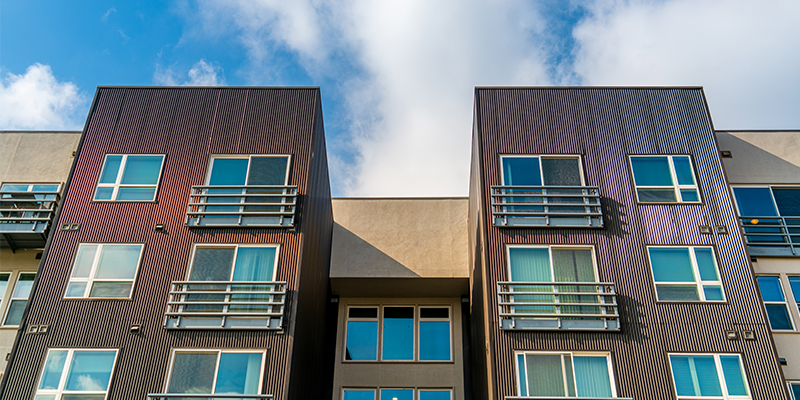While some economic indicators, including employment numbers, consumer confidence and inflation appear to be trending positively, the commercial real estate market is still contending with the challenges of the past two years. The once-booming office sector in Chicago and the surrounding suburbs was hit particularly hard; many companies have been slow to transition employees back to the office after remote work became the norm during the pandemic. But the news isn’t all gloomy for office real estate.
Owners, brokers and construction partners such as our firm have come together to develop strategies for successful office buildouts that can overcome the hurdles. Luring workers back to the office will also be key in rebuilding this sector’s former strength. To do this, building owners will need to offer creative and flexible solutions that make sense with how people work today.
Contending with market challenges takes collaborative effort
Rising prices of materials and supply chain delays have combined to make office construction projects more costly and drawn out. While some owners have decided to hold off on developing projects, we’ve worked with others who have relied on our relationships with vendors and subcontractors to keep projects feasible. What we’ve been able to do is communicate with suppliers on a near-daily basis, and, when necessary because of cost or timing, problem-solve and pivot to alternative materials and fixtures.
With building overhead increasing, building owners are also challenged with how much tenant improvement allowance they can provide. Tenants need to work with contractors that can make the most of budgets, finding lower-cost items when possible and managing subcontractors so that delivery is on-time.
New approaches to space adapt to today’s workforce
The pandemic accelerated a trend toward flexible and remote work, and many companies are still figuring out what the right mix of in-person work is for their business. The bottom line is that offices are not a thing of the past, but traditional office structures no longer work for many enterprises.
After two years of meetings on screen, some employees are burnt out and craving in-person connection. But they aren’t enticed to come in to plug in at a desk and do everything they could be doing from the comforts of home. Fewer people may be there on any given day working solo at their desks, but companies may want to bring together employees for collaboration and to build company culture. Buildouts can support bringing employees back to work with welcoming communal spaces for taking breaks and eating, conference rooms of all sizes, and private spaces to ease the transition back into office space.
We assisted Kraft-Heinz, which occupies five floors of Chicago’s Aon Center, with a successful return-to-work program. The project encompassed renovating open seating; adding conference space including more than 10 different styles of conference or collaboration zones; and features a demonstration test kitchen.
For other clients, we’ve worked collaboratively with various design teams to create the workplace flexibility their companies need at this time. This trend has extended to building owner clients as well, who are breaking up larger floor plates with creative floorplans so that companies who need less space than they did in 2020 can have more options.
When looking ahead, we also expect that the pendulum that swung towards remote work will find a new balance with more people in the office at least some of the time. We’ve already seen leading employers begin to require more in-office days. As the employment market tightens, managers may decide that having workers in the office benefits collaboration and productivity, but they’ll need the spaces to back up those assertions.
The office market was certainly dealt a strong blow from the pandemic’s lingering effects, supply chain disruption, and inflation that impacted the cost of buildouts and the overhead for building owners and businesses. However, strong partnerships between owners and tenants and contractors have made it possible to bring new office projects to fruition that meet the needs of employers today and into the future.








